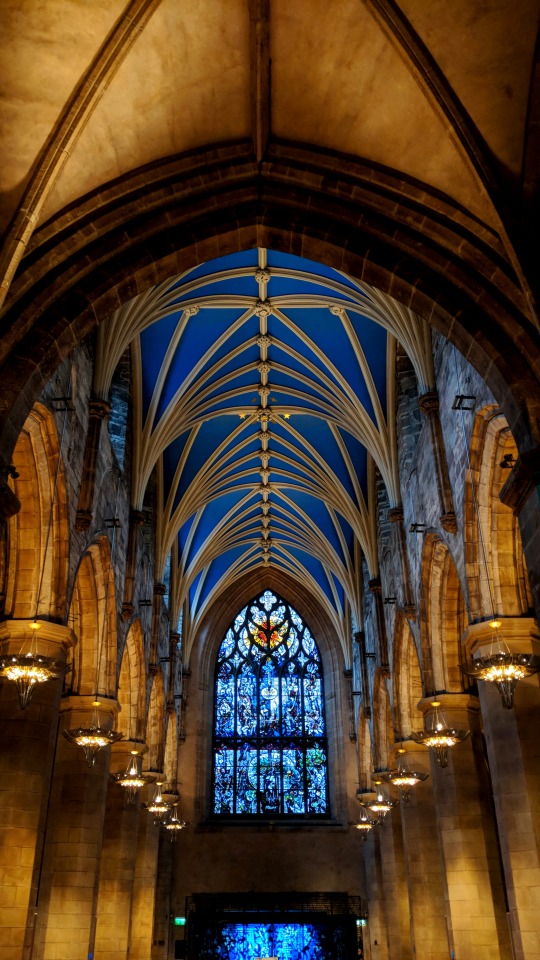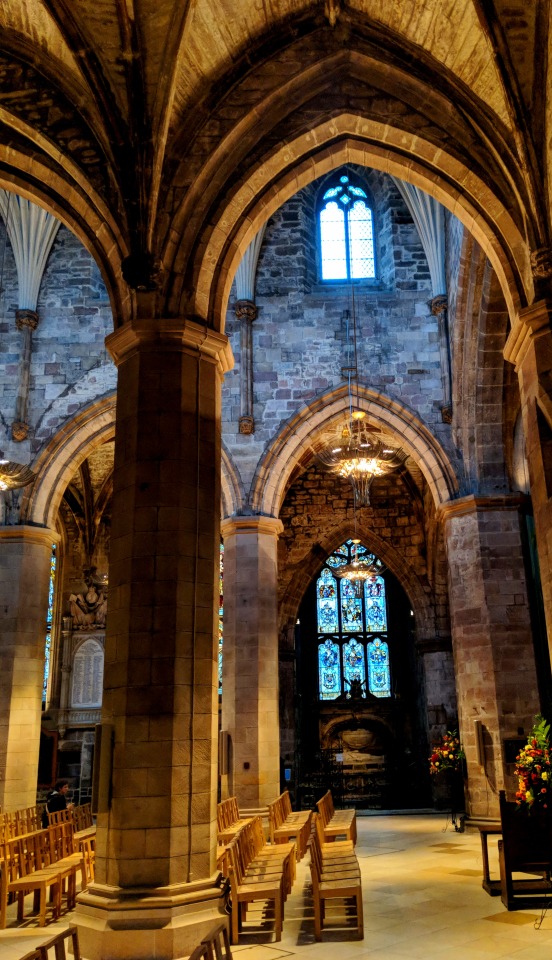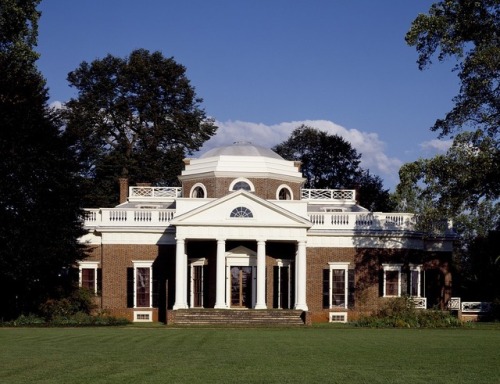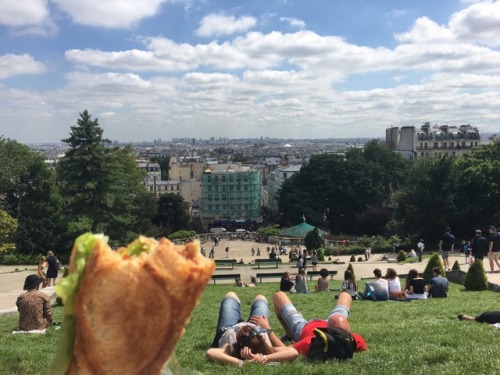#monument










A Junction for the Arts
The St. Michael and St. Gudula Cathedral (Brussels, Belgium).
This monument takes place at the crossroads of trade routes, on a hill, the Treurenberg. The Gothic cathedral (Brabant style) was built between the 13th and 16th centuries, and has impressive dimensions as well as remarkable decorative elements.
(The pictures show, in order: the facade, original photograph by Drow male ; the window of the south transept, original photograph by Henri Frelinx ; the nave, original photograph by Zairon ; Adam and Eve expelled from Eden, detail of the pulpit by Hendrik Frans Verbruggen, 1699, original photograph by Myrabella ; the nave, original photography by Kiban; a stained glass window, original photograph by M0tty ; The Biblical Magi at the west portal, original photograph by Ymblanter ; the organ, original photograph by Campania ; the choir, original photograph by yoko ; and finally, stained glass window, original photograph by Donaldytong. The original photographs have been modified)










Works of the Mind
Gothic architecture, also called “French art” (“art français”), is an architectural style that appears in the 12th century in Île-de-France and Haute-Picardie, also called in this times “Opus Francigenum”. Often summarized with the use of broken arches (unlike the Romanesque semicircles), allowing to gain height, with also recurring flying buttresses (elements that the Gothic did not invent contrary to the common idea), this style is more about art than mere technical features. Indeed, aesthetics holds a great place in this style, explaining a part of its popularity.
(The pictures show, in order: plan of the rose window of the chapel of the castle of Saint-Germain ; plan of the pinnacle of the cathedral of Reims ; window plan of Amiens Cathedral ; plan of the rose window of the south transept of Notre-Dame de Paris ; plan of the western rose window the cathedral of Mantes ; plan of the flying buttresses of the cathedral of Chartres ; plan of a fence of the Narbonne Cathedral ; plan of the spire of the cathedral of Amiens ; plan of an archivolt of the south portal of the cathedral of Amiens ; and finally, a plan of the rosace of the cathedral of Reims. All the pictures belong to public domain)










Metamorphosis
The Saint-Maclou cathedral of Pontoise, (Val-d'Oise, Île-de-France, France).
Having the status of cathedral since 1966, this Gothic monument was built in the twelfth century. Given its initial nature as a church, the building has modest dimensions and including a very narrow transept. Elements of the Renaissance style will be added in the 16th century, such as side chapels, while the symmetry of the building will be broken.
Today, magnificent capitals and Romanesque keystones are still observable, while the cathedral contains remarkable religious sculptures.
(The photographs show, in order: the western facade, photograph by BastienM ; capitals of the southwest corner of the transept crossing, photograph by Pierre Poschadel ; altarpiece of the first chapel in front of the south aisle, idem ; the nave and the organ, photograph by BastienM ; funerary slab of Jean Desmons, doctor, died in 1695, photograph oby Pierre Poschadel ; the collateral north of the nave, idem ; La Charité, by Granier for the tomb of François de Guénégaud, sculpture made around 1688, idem ; the choir, idem ; south aisle, pilaster between 4th and 5th span, idem ; and finally, sculpture representing the Christ, Joseph of Arimathea, Madeleine, and John consoling the Virgin Mary, idem)









Stones Lighter than the Sky
The cathedral Saint-Pierre of Vannes (Morbihan, Brittany, France).
This Gothic building, built on the basis of a Romanesque cathedral, will be under construction for a long period, between the fourteenth and nineteenth centuries. The structure of the building also testifies to this Romanesque legacy with its ten chapels and its transept with unequal arms.
Today, the building retains remarkable sculpted details, making it a good spot for history and architecture enthusiasts.
(The photographs show, in order: the right Angel of the high altar, photograph by GO69 ; the nave, photograph by Jean-Christophe Benoist ; an outside view, photograph by Georgi Genov ; the high altar, photograph by Jean-Christophe Benoist ; spire details, photograph by libriothecaire ; the portal of the west facade, photograph by Jordiferrer ; the choir, photograph by Jean-Christophe Benoist; the right Angel of the high altar, photograph by Vassil ; and finally, an external view of the spire, photograph by A455bcd9. The original photographs have been modified)










What the Angels Protect…
The Basilica of St. Nicholas of Nantes (Loire-Atlantique, Pays de la Loire, France).
Built between 1844 and 1869, under the direction of the architect Jean-Baptiste-Antoine Lassus (1807-1857), in a neo-Gothic style, this monument contains remarkable and diverse pieces of religious art.
(The photographs show, in order: the bell tower, original photograph by Guillaume Piolle ; the nave, original photograph by François de Dijon ; a detail of a chapel, idem ; the vault, original photograph by Groume ; a detail of the eight angels of the roof, original photograph by Selbymay ; an interior detail, original photography by François de Dijon ; the ambulatory, idem ; the crucifix of the choir, idem ; the rose window of the west transept, idem ; and finally, a detail of a pillar, original photograph by Selbymay. The photographs have been modified)










The Dawn of an Art
The Notre-Dame Cathedral of Noyon (Oise, Hauts-de-France, France).
Built in the twelfth and thirteenth centuries, this monument is typical of early Gothic buildings, and therefore has unique features, later abandoned by the builders for future Gothic monuments, such as the presence of apses (spaces in a semicircle) at the end of each branch of the transept.
The cathedral will also experience many damages, like fires, devastations during the Revolution or the Second World War, among others ; making it as a monument often restored, as evidenced by its important lack of ouvraged stained glass windows, nowadays.
(The photographs show, in order: the towers, photography by Marc Ryckaert ; wrought iron gate, photograph by Jean-Pol Grandmont ; a detail of the transept, photograph of Pierre Poschadel ; detail of the chorus, idem ; the nave, photography by Jean-Pol Grandmont ; an external view of the chevet, photography by Pierre Poschadel ; the choir, photography by Zairon ; chapter room of the cloister, photograph of D Villafruela ; the bedside photography of Marc Ryckaert ; and finally, the southern collateral nave, photograph of Daniel Villafruela. The original photographs have been modified)










“Edinburgh would not be Edinburgh without it”
- Cameron Lees (1835-1913)
The Saint Giles’ Cathedral of Edinburgh, Scotland.
Built from the 12th century, many great and famous elements of this gothic monument will be added later, as the distinctive crown steeple, over the crossing, installed around 1490, while this spire is now one of the most known Edinburgh’s landmarks.
(The pictures show, in order: a global exterior view, original photograph by Carlos Delgado ; the blue screen inside new west porch, original photograph by Enchufla Con Clave ; a view on the nave, idem ; a view on the arcades, original photograph by Leandro Neumann Ciuffo ; the Thistle Chapel, original photograph by Enchufla Con Clave ; the crown steeple, original photograph by Stephencdickson ; detail of a stained glass window representing the Christ commanding the sea to be still, original photograph by Amy Mantravadi ; an interior view, original photograph by Enchufla Con Clave ; the nave, original photograph by Michael D Beckwith ; and finally, the sculptures above the west door, original photograph by Nilfanion. The original photographs have been modified)










At the Gates of the Ocean
The Sainte-Marie cathedral of Bayonne (Pyrénées-Atlantiques, Nouvelle-Aquitaine, France).
This Gothic monument was built between 1213 and the 14th century and posses a magnificient adjoining rectangular cloister of radiant Gothic style dating from the 14th century too. Furthermore, the cathedral presents two spires rising to 85 meters in height, and is renowned for its beautifully preserved keystones.
(The photographs show, in order: a view on the spires, original photograph by François de Dijon ; the choir, original photograph by Dominique Dalbiez ; detail of a keystone, idem ; the cloister, ditto ; a drawing of a stained glass project, by Émile Thibaud, 1847 ; a view from the cloister ambulatory, original photograph by Eduardo Miranda ; a view on a gargoyle, original photograph by Cinoworus ; a view of the stained glass windows in the choir, original photograph by Svein-Magne Tunli ; a view of the cloister arches, original photograph by Dominique Dalbiez ; and finally, a bay of stained glass windows seen from the outside, original photograph by Eduardo Miranda. The original photographs have been modified)










Remarkable Ruins
Thomas Girtin (1775-1802), English watercolourist and etcher.
This artist allowed the recognition of watercolour as an art, while he is also the initiator of romantic watercolours.
Specialist in landscapes and architectural representations, friend of the painter J. M. W. Turner (1775-1851), he died prematurely of tuberculosis, in his studio.
(Details. The pictures show, in order: Denbigh Castle, circa 1793 ; Saint Cuthbert’s Holy Island, 1797 ; St. Alban’s Cathedral, Hertfordshire, circa 1797 ; Tolleshunt-Beckingham, Essex, circa 1795 ; Jedburgh Abbey, Roxburghshire, circa 1793 ; Durham Cathedral and Castle, circa 1800 ; Tempio d’ Antonio e Faustina, between 1798 and 1799 ; Lichfield Cathedral, Staffordshire, 1794 ; Tynemouth Priory, Northumberland, 1793 ; Kirkstall Abbey from the N.W., circa 1792)










Take Some Height
The Salisbury Cathedral (Salisbury, Wiltshire, England).
This monument was built between 1220 and 1320, in the style of Early English Gothic. The cathedral is known to have the tallest spire in England, standing at 123 meters.
It also contains a clock belonging to the oldest working models in the world, and the best preserved original copy, among the four remaining, of the Magna Carta.
(The photographs show, in order: a detail of the west facade, original photograph by Diego Delso ; the nave and the choir, idem ; the nave, idem ; the Trinity Chapel, original photograph by David Iliff ; a detail of the Gothic arches, original photograph by Jan van der Crabben ; the spire, original photograph by Diego Delso ; the nave, original photograph by Bernard Gagnon ; the cloister, ditto ; the northern transept, original photograph by Diego Delso ; and finally, the Chapel of the Trinity, original photograph by David Iliff. The original photographs have been modified)

The Water of Life
Sculpture by Stephen Broadbent (British sculptor, born in 1961), in Chester Cathedral cloister garth.
(Original photograph by Ian Kelsall)


Inside the Druid’s Temple.
Had the misfortune to visit on a day when a group of students were filming and firmly ensconced for the day so could not explore and only got two snaps.




The Ana Cross, North Yorkshire Moors, England.
Standing 12 foot high, a 19th Century replacement of the medieval Ain Howe Cross, thought to have been a sanctuary cross, the head of which is held in St Mary’s Church, Lastingham - of course the church was locked. The original cross is thought to have been 24 foot high making it the largest known Pre-Norman monument in England.

Turistična | 18.4.2021

This, the beginning of the inspected.
Italy, 29/09/2019

Missing it.
Italy, 21/09/2019

Don’t look too far.
Belgium, 30/11/2016
Sacre Coeur et Montmartre
Guess who’s back in Paris? This girl!!
Last year on my flight home from my month in France I realized that I had never gotten to Sacre Coeur, one of Paris’ most iconic landmarks and scenic overlooks!
This year, for graduation my parents gifted me with a week in my favorite city in the world. Naturally Sacre Coeur was my first stop. The walk (hike) to the top was long but worth it. I found a bench about halfway up in front of the fountain and rested with a baguette sandwich I had picked up on the way. I lunched and caught my breath before going up to the cathedral.
After snapping a couple pics I went inside (where they don’t allow photography) and explored for a little while. It definitely had a flow of tourists, so I felt rushed, but that didn’t stop me from lighting a candle in memory of my Nana who was catholic and I knew would have wanted me to.
I debated whether to go to the top or not. After standing on line for a few minutes I decided I would benefit more from strolling around the area for a bit. Montmartre is located in the 18e Arr. and overlooks basically all of Paris. The streets leading to Sacre Coeur are packed to the gills with souvenir shops, crêperies, and other tourist traps. Beyond the perimeter, however, I found what I was looking for. The apartment buildings that line the streets are stacked with window boxes and laundry airing in the wind, shutter windows opened to let the beautiful 73F (22C) air in. I watched some preteens walking home from school, gabbing and giggling as school kids do.
On my way back down the hill I took a different road and caught a quick glimpse of the Tour Eiffel. Perhaps I’ll go visit her tonight. My carte navigo is loaded, so pourquoi pas?
Post link
Funerary monument to Pope Leo XIII (1810–1903) at the Lateran Basilica, sculpted by Giulio Tadolini (1849–1918).
Post link





